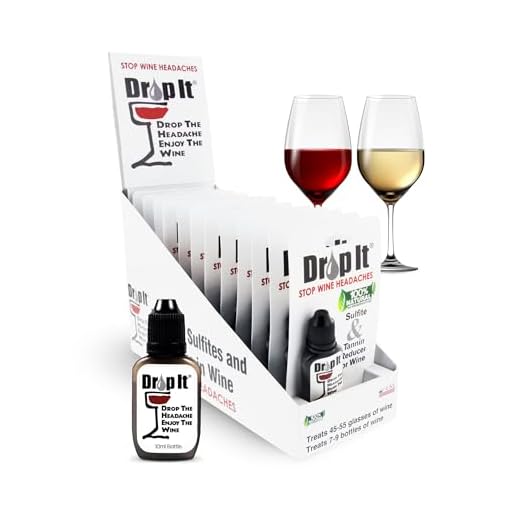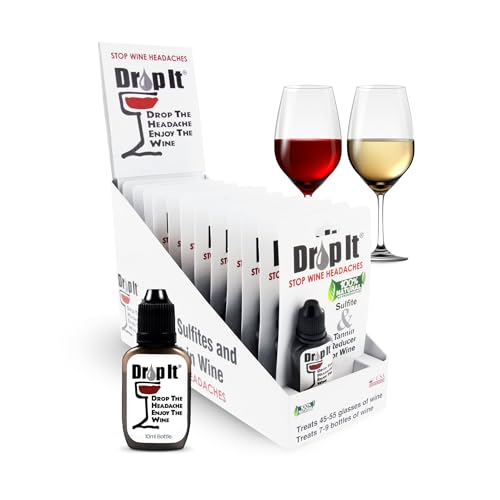



Generally, an unopened bottle of Chardonnay can remain in optimal condition for three to five years. However, certain factors like storage temperature and light exposure can significantly influence this timeframe. Once opened, you typically have about three to five days to enjoy the best flavors. After this period, oxidation begins to alter the taste, often leading to a less enjoyable experience.
For the best preservation, store bottles horizontally in a cool, dark place, ideally between 45°F and 65°F. If you find yourself with a half-empty bottle, re-cork it tightly and refrigerate to slow down the oxidation process. This simple step can extend its drinkability, allowing you to savor that delightful sip a bit longer.
In short, while the clock is ticking once the seal is broken, understanding the nuances of storage can help you make the most of each pour, ensuring that every glass remains as fresh as intended.
Duration for Quality Retention of Chilled Vino
Typically, an unopened bottle remains in prime condition for 1 to 2 years, depending on its origin and storage conditions. Once uncorked, consume it within 3 to 5 days for optimal taste.
Storage Recommendations
Keep your sealed bottles in a cool, dark place with stable temperatures, ideally around 50-55°F (10-13°C). Once opened, seal the bottle tightly and refrigerate to extend freshness.
Signs of Deterioration
Watch for changes in aroma and flavor. If you detect a vinegary scent or a sharp, unpleasant taste, it’s time to discard. A dull or flat profile also indicates that the beverage has past its prime.
Understanding the Shelf Life of Unopened White Wine
An unopened bottle of white varietal can typically remain in prime condition for 1 to 2 years after the purchase date, depending on the specific type. However, certain factors influence its longevity.
Generally, wines classified as light and crisp, such as Sauvignon Blanc, are best consumed within a year. Conversely, fuller-bodied options like Chardonnay might maintain their quality for up to 2 years or more, particularly if they are stored properly.
| Type of White Wine | Optimal Shelf Life |
|---|---|
| Sauvignon Blanc | 1 year |
| Chardonnay | 2 years |
| Riesling | 2-3 years |
| Pinot Grigio | 1-2 years |
Storage conditions significantly affect preservation. Ideally, keep bottles in a cool, dark place with controlled humidity. Avoid exposure to direct sunlight and temperature fluctuations, as these conditions can accelerate deterioration.
Regularly check the cork for any signs of damage or leakage, as this can indicate that the wine has been compromised. If the cork appears intact and the wine is stored correctly, it should remain enjoyable within the recommended timeframe.
Factors That Affect the Longevity of Opened White Wine
Oxidation plays a significant role in determining how long your opened bottle remains enjoyable. Once exposed to air, the wine begins to lose its freshness and develop different flavors. To slow this process, resealing the bottle tightly or using a vacuum pump can help minimize oxygen exposure.
Temperature is another critical element. Storing the bottle in a cooler environment, ideally between 45°F and 55°F (7°C to 13°C), preserves the integrity of the liquid. Avoid placing it in direct sunlight or near heat sources, as elevated temperatures can accelerate deterioration.
Storage Conditions
The position of the bottle matters as well. Keeping the bottle upright reduces the wine’s contact with the cork, preventing it from breaking down and releasing unwanted flavors. If you have a wine fridge, it’s an excellent option for maintaining optimal conditions.
Type of Closure
Consider the closure of the bottle: cork versus screw cap. Cork closures allow some air exchange, which may enhance aging but also increases the risk of spoilage. Screw caps provide a tighter seal, often leading to longer preservation of freshness.
Finally, the initial quality of the wine influences longevity. High-quality selections with good acidity and structure often last longer than their lower-quality counterparts. Always trust your palate; if something tastes off, it’s best to discard it.
Signs That White Wine Has Spoiled
A noticeable change in aroma is often the first indicator that a bottle has deteriorated. A sour, vinegary scent replaces the fresh, fruity bouquet typical of quality selections. If the nose is off, it’s wise to avoid consumption.
The appearance of the liquid can also signal spoilage. An unexpected cloudiness or haziness, especially in a previously clear pour, suggests microbial activity. Additionally, a brownish tint indicates oxidation, which compromises flavor integrity.
Taste plays a crucial role as well. If the flavor profile shifts to an unpleasant sourness or bitterness, it’s time to discard the bottle. Fresh, lively characteristics should dominate; anything less points to spoilage.
Lastly, an unusual fizz in a still variety can be a red flag. While sparkling varieties contain bubbles naturally, any effervescence in a still selection may indicate unwanted fermentation. Trust your senses; if something seems off, it likely is.
Proper Storage Techniques for Extending White Wine Freshness
Maintain a cool temperature between 45°F and 65°F (7°C to 18°C). Avoid fluctuations, as they can harm the liquid’s integrity.
Store bottles horizontally. This keeps the cork moist, preventing air from entering and spoiling the contents.
Keep away from light, particularly direct sunlight. Ultraviolet rays can degrade flavors and aromas.
Ensure low humidity levels, ideally between 50% and 70%. Excess moisture can promote mold, while too little can dry out corks.
Avoid strong odors nearby. Wines can absorb scents from their environment, altering their profile.
Invest in a wine fridge if possible. These appliances provide stable conditions tailored for preservation.
For opened bottles, use a vacuum pump to remove air, or consider using inert gas wine preservers. These methods slow oxidation.
Consume opened bottles within 3 to 5 days for optimal taste, and store them in the refrigerator to extend freshness.
Label bottles with opening dates to track their lifespan easily.
Duration of Various Types of Unopened White Wines
Typically, lighter varietals such as Pinot Grigio and Sauvignon Blanc maintain their quality for about 1 to 2 years beyond the vintage date. These wines are best enjoyed fresh to appreciate their crispness.
Ageing Potential of Richer Varietals
Full-bodied options like Chardonnay, particularly those that are oaked, can last up to 3 to 5 years when stored properly. They develop complexity over time, making them a delightful choice for those who appreciate a more nuanced profile.
Special Cases: Dessert and Sparkling Varieties
Fortified wines such as Sauternes can last for decades due to their higher sugar and alcohol content. Sparkling wines, like Champagne, are generally best consumed within 3 to 5 years, although vintage versions can be aged longer. Always check for specific recommendations from producers for the best experience.
In sum, understanding the specific characteristics of each type allows for better decisions on optimal enjoyment timelines. Proper storage techniques significantly influence these durations, ensuring every sip is as intended.
Best Practices for Enjoying White Wine Before It Expires
To maximize the enjoyment of your chilled beverage, consume within a specific timeframe after opening. Aim to finish within three to five days for optimal flavor.
Here are essential steps to follow:
- Proper Glassware: Use clean, appropriate glasses to enhance aroma and taste.
- Serving Temperature: Serve at a cool temperature, generally between 45°F to 50°F (7°C to 10°C), to highlight its characteristics.
- Food Pairings: Pair with light dishes such as seafood, salads, or chicken to complement the wine’s profile.
- Decanting: Consider decanting for certain varieties to aerate and bring out flavors, particularly for fuller-bodied types.
- Keep It Fresh: Reseal with a cork or utilize a wine preservation system to maintain freshness after opening.
Additionally, explore creative ways to enjoy any leftover product. Incorporate it into sauces or marinades, or consider making a refreshing wine spritzer with soda water and citrus fruits. For a quick meal enhancement, check out this guide on how to cook a baked potato faster.
Following these guidelines will ensure a delightful experience until the very last sip. Cheers!









